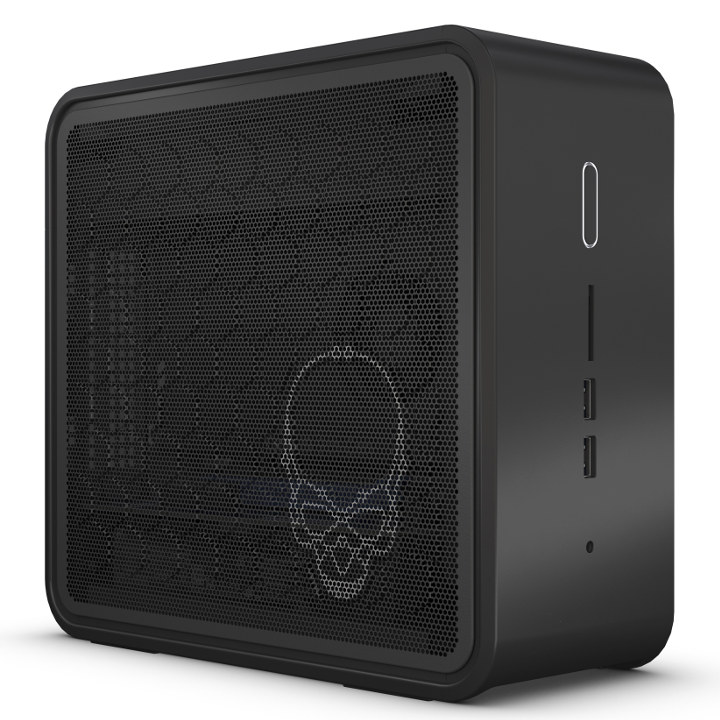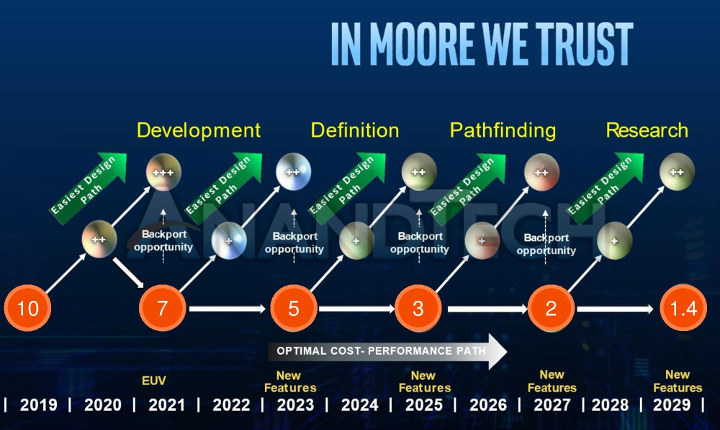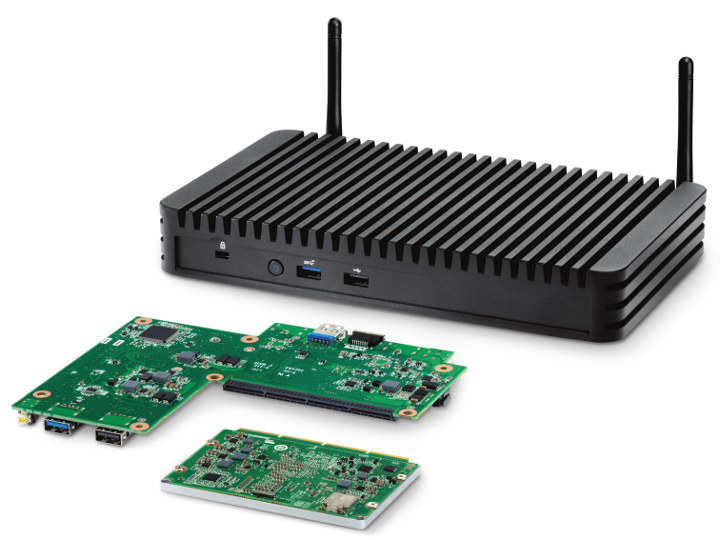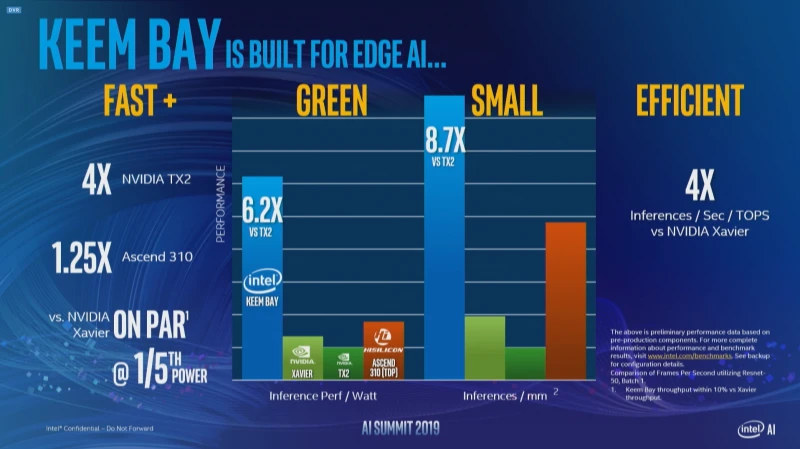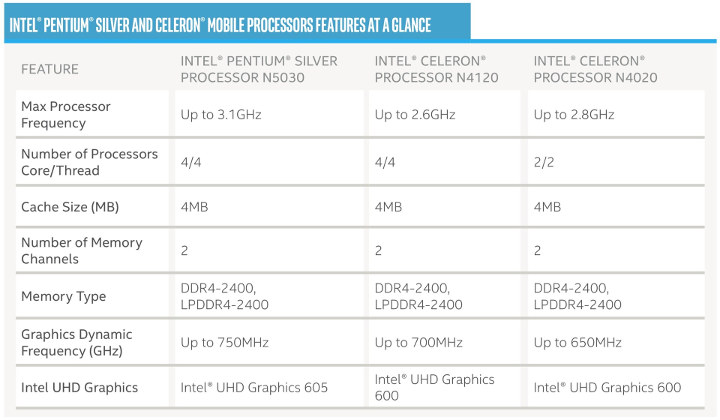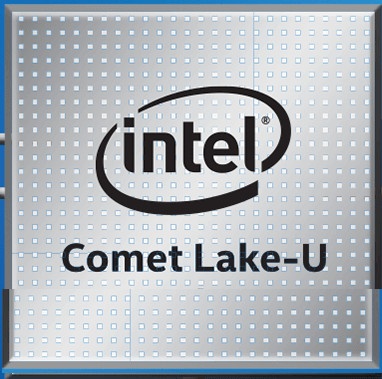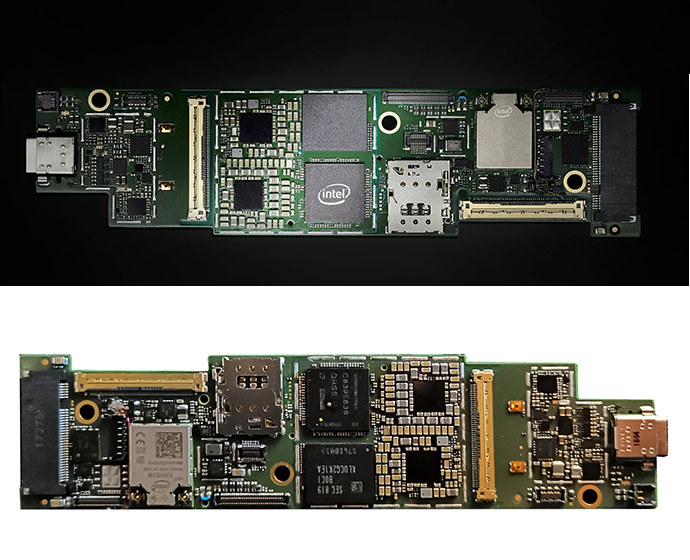Intel’s NUC mini PC range is familiar to anyone who has looked for a very small compact and functional PC. But they, and similarly sized mini PCs in general, have a notable limitation when compared to desktops and also many high-end laptops in that the graphics performance is somewhat restricted because it is typically provided by the processor’s integrated graphics. Whilst these integrated graphics are suitable for browsing, video playback, and the office style applications that the devices have been marketed towards, they are normally insufficient for gaming as only low framerates are obtainable. Intel initially tried to address this gaming shortfall through the introduction of the Intel Skull Canyon (NUC6i7KYK) NUC which came with a 6th-gen Skylake Core i7-6770HQ that included Iris Pro Graphics 580 and at the time with their 72 EUs (Executions Units) was Intel’s most powerful integrated GPU. Additionally, the Skull Canyon also featured a (USB-C) […]
Intel Roadmap 2019-2029 – 1.4 nm Processors Expected within 10 Years
A roadmap from a slide by ASML presented at the IEDM conference recently shared on Anandtech shows Intel Roadmap for the next ten years with 7nm manufacturing process expected in 2021, 5nm in 2023, 3nm in 2025, 2nm in 2027, and 1.4nm in 2029. Intel did however contact Anandtech to explain the slide from ASML is a modified version of the Intel slide shown below that does not show actual process nodes, only the dates. I suppose Intel does not want to make any commitments seeing how their 10nm technology suffered delays after delays, and in any case the actual dimensions of the process may vary by that time frame depending on difficulties or new discoveries made. Both slides mention +, ++, and backport opportunities for all new processes. + and ++ are just iterative improvements for the current process, while back- porting is the option to port a process […]
Intel Austin Beach is a Modular, Fanless NUC Powered by Intel NUC Compute Elements
Unveiled last May, Intel NUC Compute Element is a family of cards that should cost less than the failed Computer Cards, and easy to handle than your typical computer-on-module. The first Compute Elements showcased at Computex 2019 were powered by a 15-Watt Core U-series processor, and now various models will find their way into Intel Austin Beach fanless NUC with “Chandler Bay” NUC Compute Elements powered by Whiskey Lake processors. Intel Austin Beach specifications: Chandler Bay Compute Element (one or the other, all 15-W Whiskey Lake) BKCM8CCB4R – Intel Celeron 4305U 2-core/2-thread processor with 4GB LPDDR3, 64GB eMMC storage BKCM8PCB4R – Intel Pentium Gold 5405U 2-core/4-thread processor with 4GB LPDDR3, 64GB eMMC storage BKCM8i3CB4N – Intel Core i3-8145U 2-core/4-thread processor with 4GB LPDDR3 BKCM8i5CB8N – Intel Core i5-8265U 4-core/8-thread processor with 8GB LPDDR3 BKCM8v5CB8N – Intel Core i5-8365U 4-core/8-thread vPro processor with 8GB LPDDR3 BKCM8i7CB8N – Intel Core i7-8565U 4-core/8 […]
Gen 3 Intel Movidius “Keem Bay” VPU Introduced at 2019 Intel AI Summit
Intel made announcements about upcoming AI solutions at 2019 Intel AI Summit. Those include Intel Nervana Neural Network Processors (NNP) for training (NNP-T1000) and inference (NNP-I1000) for cloud and data center customers, as well as Gen 3 Intel Movidis “Keem Bay” VPU. We’ll focus on the latter in this post with Intel claiming similar performance as NVIDIA Jetson AGX Xavier at much lower power consumption with claims of up to 4.7 times more power efficiency when using ResNet-50 benchmark inference measurement using INT8 with a batch size of 1. Considering Jetson Xavier AGX has a ~30W power budget, that would mean Movidius “Keem Bay” consumes around 6 Watts. Compared to Myriad X MA2085, the new Gen3 VPU is said to have more than 10 times the inference performance. Intel did not provide any TOPS figure, but considering the company announced 1 TOPS of neural compute performance for Myriad X, one […]
Intel Gemini Lake Refresh Family Announced with 6 new Processors
Intel Gemini Lake processors were first introduced in 2017, and we’ve gotten some interesting low-power mini PCs as well as SBCs such as ODROID-H2, albeit it was not with troubles since the processors were unavailable for several months. Production of Gemini Lake processors resumed a few months ago, and now the company has announced Gemini Lake Refresh family with 6 new processors. This includes three 6W mobile “N-series” processors… … and three 10W desktop “J-series” processors. Since those are “refresh” processors each new part improves on existing SKU’s with increased frequencies as noted by Liliputing. See the list of Gemini Lake and Gemini Lake Refresh processors below with the latter highlighted in bold. Celeron N4000 – Dual-core processor @ 1.1 GHz (base) /2.6 GHz (boost) Celeron N4020 – Dual-core processors @ 1.1 GHz /2.8 GHz Celeron N4100 – Quad-core processor @ 1.1 GHz /2.4 GHz Celeron N4120 – Quad-core processor […]
Intel Introduces Celeron 5205U & Pentium Gold 6405U Lower Cost Comet Lake-U Processors
Intel officially launched the 10th Generation Comet Lake processor family at the end of September with a choice of Core i3, i5, and i7 processors with 15W TDP (Comet Lake-U) or 4.5~5.5W TDP (Comet Lake-Y) which we’ve so far found in some laptops including some running Linux, and Windows mini laptops among other devices. Intel has now quietly added two new SKU’s to their 15W Comet Lake-U with respectively Intel Celeron 5205U dual-core processor and Pentium Gold 6405U dual-core/quad-thread processor which will come at a lower price than their Core i3/i5/i7 siblings. We’ll find the two new processors at the top of the comparison table below together with previously launched Comet Lake-U processors. SKU Cores / Threads Cache TDP/ UP TDP Base Freq (GHz) 1C Turbo (GHz) AC Turbo (GHz) GPU Freq (MHz) Memory support Celeron 5205U 2/2 2MB 15W 1.9 N/A N/A 900 LPDDR3 2133 /DDR4 2400 Pentium Gold […]
Intel Unveils Tremont Low-power x86 Architecture, Lakefield Hybrid Processor
Intel Tremont microarchitecture was first leaked in April 2018 as a successor to Goldmont Plus used in Gemini Lake processors among others. But Intel has now made it official and revealed details about Tremont architecture at Linley Fall Processor Conference in Santa Clara, California. The new architecture is said to deliver significant IPC (instructions per cycle) gains compared with Intel’s prior low-power x86 architectures. Tremont-based processors will target client devices, IoT products, 5G networking, efficient datacenter servers, etc… Tremont Architecture Some of the highlights of Tremont architecture include: Intel Core class branch prediction with long history,32 bytes based, L1 predictor (no penalty) and large L2 predictor Out of order fetch – 32KB instruction cache, 32 bytes/cycle, up to 8 outstanding misses 6-wide out of order instruction decode Dual 3-wide clusters Wide decode without the area of a uop cache Optional single cluster mode based on product targets 4 wide allocation […]
Wi-Fi Certified 6 Program Available for Products based on Broadcom, Cypress, Intel, Marvell, and Qualcomm 802.11ax Chips
Last year the WiFi alliance introduces a new naming scheme for WiFi using numbers instead of IEEE standards so that WiFI 4 is 802.11n, WiFi 5 is 802.11ac, and WiFi 6 is the latest 802.11ax standard with data throughput up to 10 Gbps, and a better ability to manage high-density scenarios. Shortly after (November 2018) we also got news of the first WiFi 6 routers from ASUS and NETGEAR, but the WiFi alliance only just announced the launch of their Wi-Fi Certified 6 program that promises optimal interoperability and security. The program will make sure the following features are properly implemented: WPA3 WiFi security Orthogonal frequency division multiple access (OFDMA): effectively shares channels to increase network efficiency and lower latency for both uplink and downlink traffic in high demand environments Multi-user multiple input multiple output (MU-MIMO): allows more downlink data to be transferred at once and enables an access point […]


